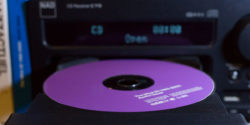Back in October 2019 I published a response to the breathless news reported across the tech, music and popular press that “vinyl outsold CDs” for the very first time. While true in terms of raw dollars, as I demonstrated, it wasn’t true in terms of volume. More than twice the number of CD albums were sold than vinyl – the revenue difference likely accountable to the fact that records now typically cost twice as much, or more, than the equivalent CD.
Now the sales numbers for all of 2020 are out, and the headlines look much the same as they did. It’s true that vinyl did hit a new sales peak not seen since the late 20th century, increasing its revenue lead over vinyl. In fact, the format’s take increased 28.7% over 2019, while CD’s share dropped 23%.
Nevertheless, 38% more CDs were sold – 31.6 million to vinyl’s 22.9 million. Clearly, the gap is closing. Yet, as audio writer John Darko points out, overall digital album sales outclassed both, at 33.1 million.
Of course, this all seems like peanuts compared to streaming revenue, which racks up $10bn, compared to a combined $1.1bn for physical formats.
Don’t get me wrong, I’m not anti-vinyl. I’m also not arguing that CDs are better. Rather, I’m an advocate for looking at the whole picture. In 2021 CDs are simply cheaper and easier to get made than vinyl records. So, while they’re declining in popularity, compact discs are still a very viable medium for distributing music in a physical format.
I stream music pretty much every day, and I buy downloads. But an internet outage or label pulling its catalog cuts off my stream in an instant, while one bad hard drive easily separates a person from their downloads. My CDs, and records, are still the most persistent way to own my most favorite music.
Moreover, the RIAA report does not account for the used market. There, too, vinyl is popular. But so are CDs (and cassettes). In its mid-year 2020 report, online marketplace Discogs said overall physical media sales were up 30% compared to the first half of 2019. Vinyl was up 34% and CDs were up 31%. In terms of raw volume, Discogs saw 5.8 million records change hands, compared to 1.7 million CDs.
Of course, we have to keep in mind that vinyl had a 40 year head start on CDs, and these are global numbers – compact disc was much more delayed in some countries compared to the US or Western Europe. Though I’m not betting that it will surpass used vinyl sales, I expect to see that used CD volume will continue to grow. It will be fueled by renewed interest in physical media, inflation in vinyl prices and concomitantly lower CD prices, combined with the fact that there are thousands of albums on compact disc that never saw a vinyl release that are still hard to find in legitimate digital streaming or download.
As I’ve proclaimed before, now is a great time for music lovers to either get back into CD or give the format a try, especially if the compromises of streaming aren’t quite cutting it for you. Used racks are bursting at the seems with bargains, as are eBay, Discogs and thrift stores. It used to be that way for a fair amount of used vinyl, too, about a decade ago. But just like with records, the compact disc bargains may not last as more listeners realize what is out there, and what they’re missing.



